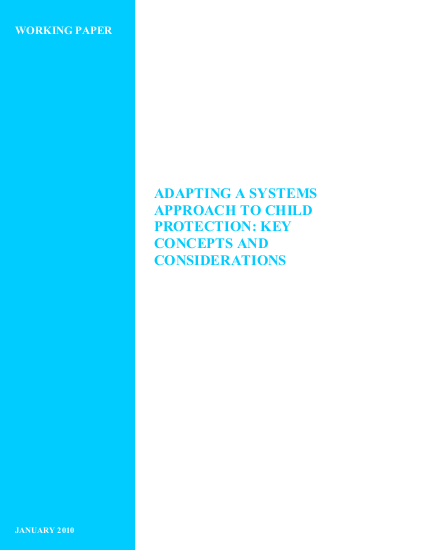
Child protection systems have unique structures, functions, capacities, and other components. These are typically assembled in relation to a set of child protection goals. These systems have traditionally neither been the particular focus of child protection discourse nor that of child protection “practise” or action.
Historically, analysis and programming in child protection have focused on issues. Among those that quickly come to mind are violence, exploitation, abuse and neglect, alternative care, justice for children, trafficking, child labour, and child separation. While the result of vertical, issue-focused programming may be effective in serving the specific cohort of children reached, it has serious limitations. Focusing on issues in the absence of an understanding of how they relate to the overall system, and to an endless list of risks and assets, can result in ineffective programming, which is neither sustainable nor truly able to reach all children who are in need of protection.
UNICEF has initiated a process to move to a more systemic approach in its child protection programming. A child protection system—as an identified concept common to all child protection practitioners—is new. The question that arises when one refers to a child protection system, or systemic work in child protection is: what is it? In attempt to answer this and other questions, UNICEF contracted Chapin Hall at the University of Chicago, with the American Humane Society, to review academic and professional literature on systems, leading to a conceptual framework of the child protection system.
It is with great pleasure that we present this paper to you. With input from more than fifty people from eighteen organisations, it is an important reflection on where we are now in our understanding of child protection systems. The paper provides a basis for further mapping and assessment. From this common platform, we look forward to ongoing work in this area by the many actors and partners that we have the privilege to learn from. Our hope is that this paper makes a sound contribution to this critical process.